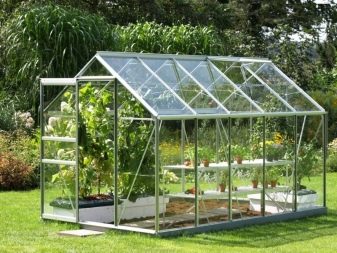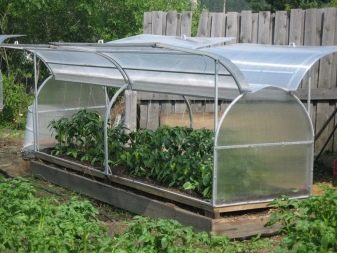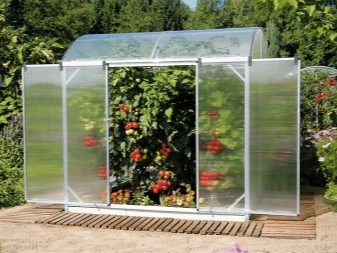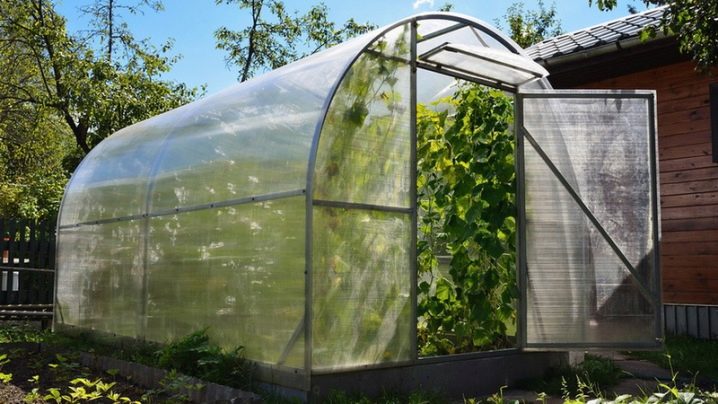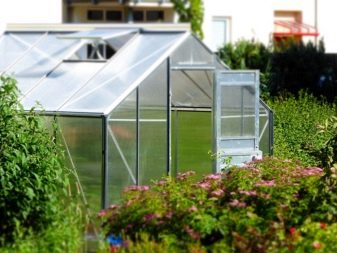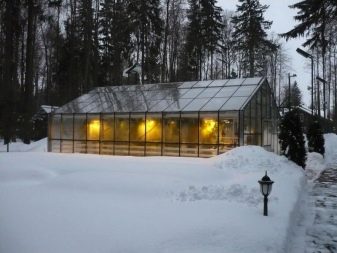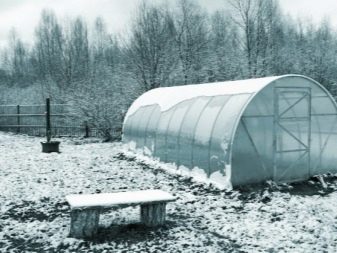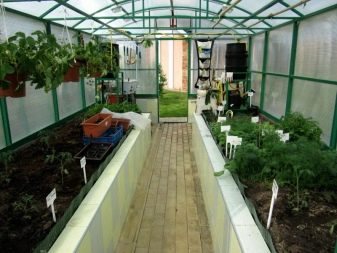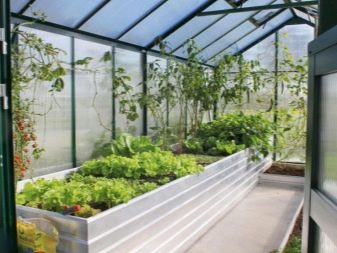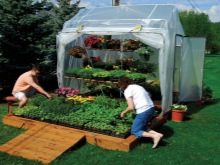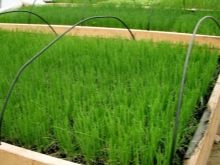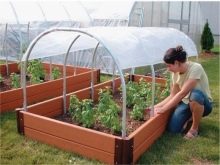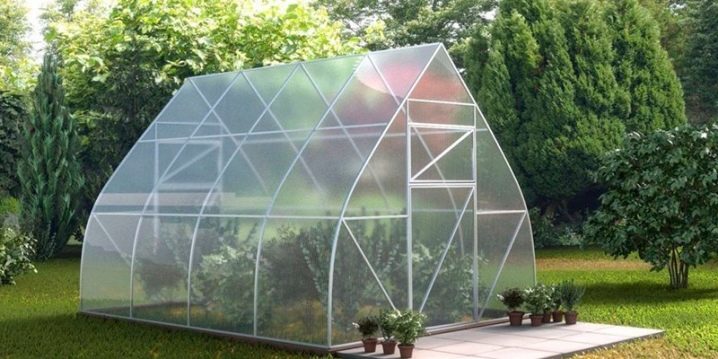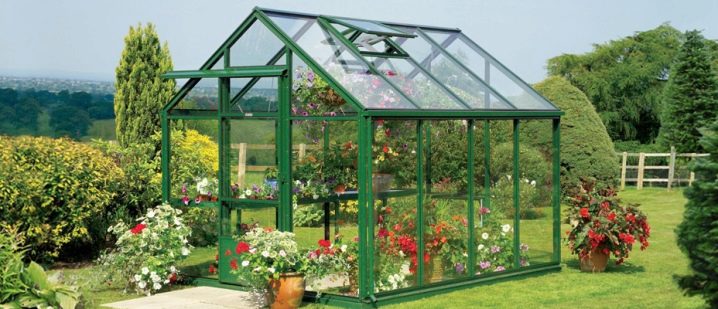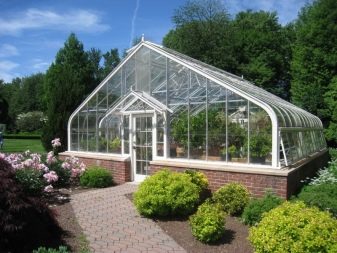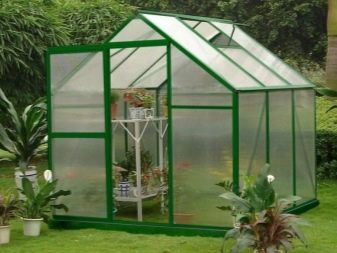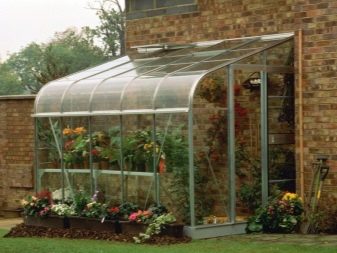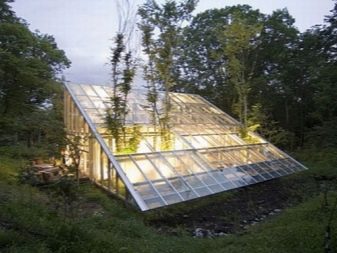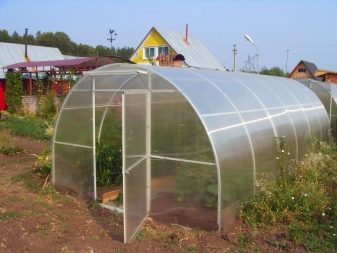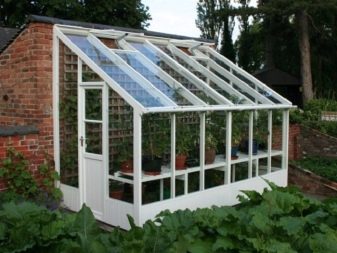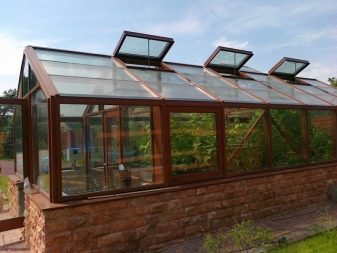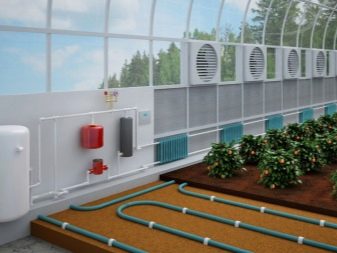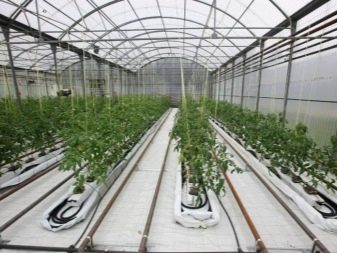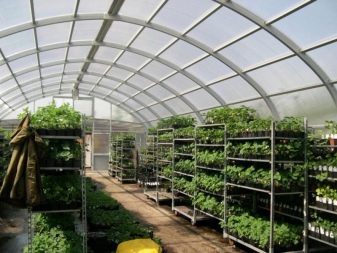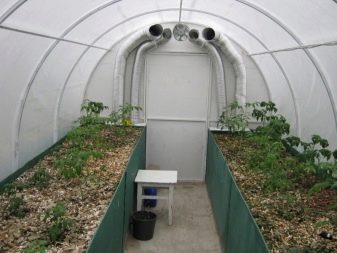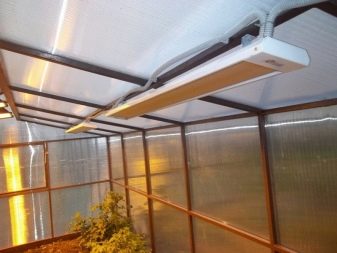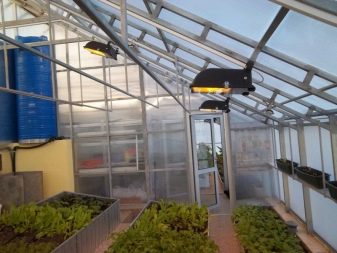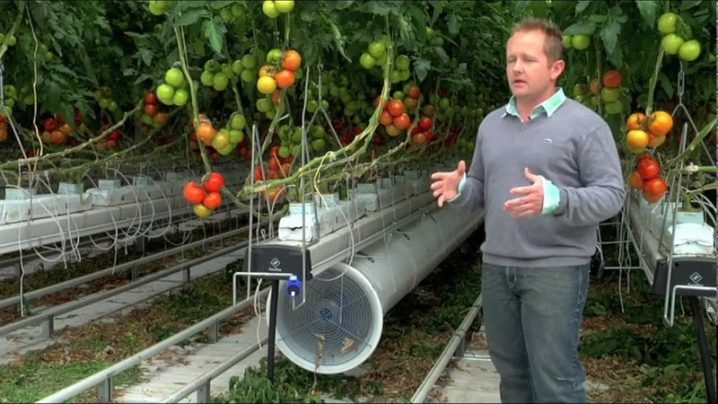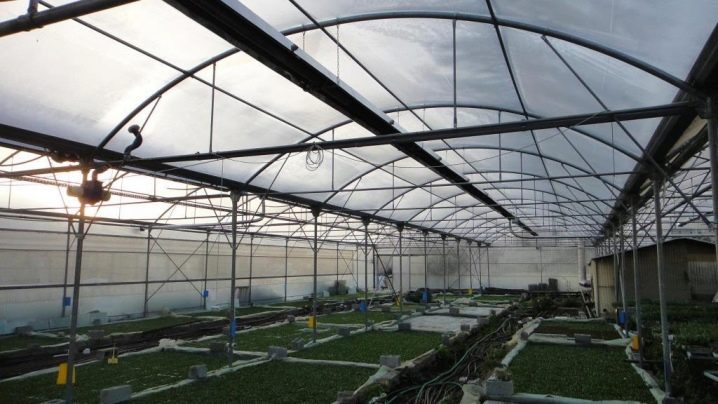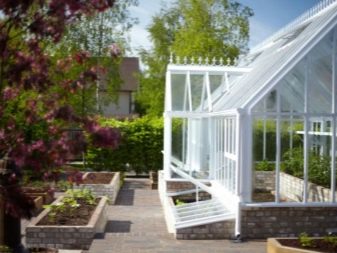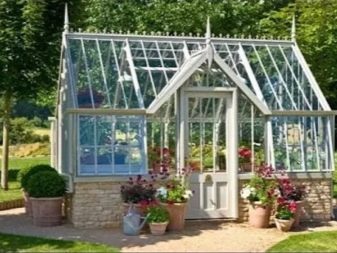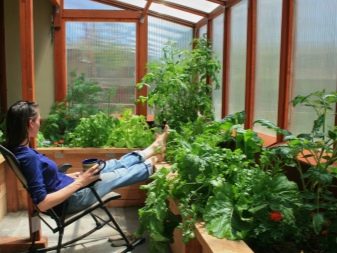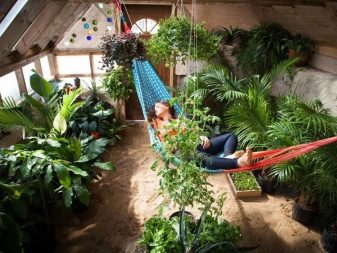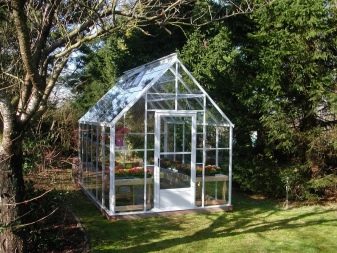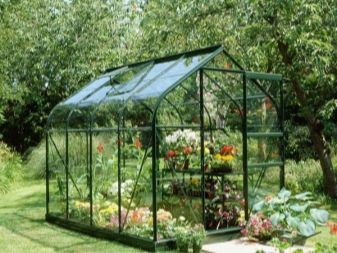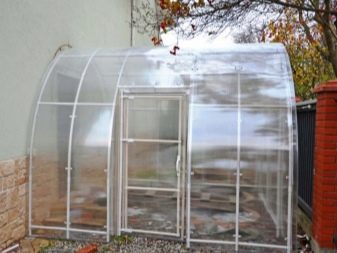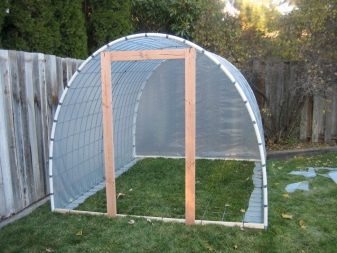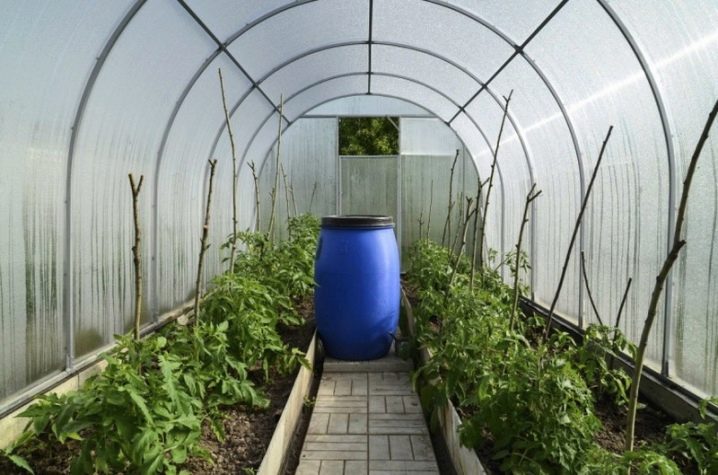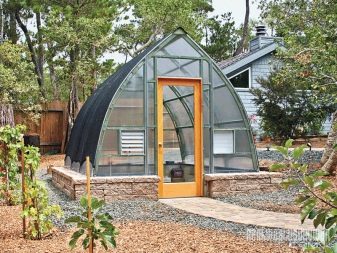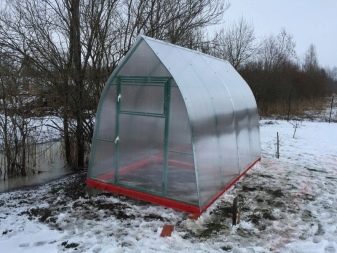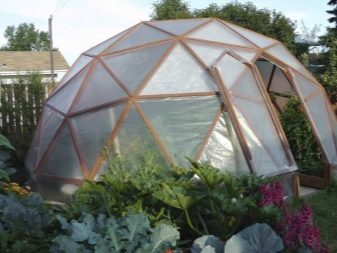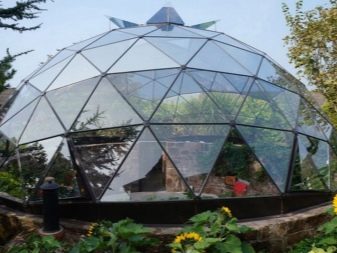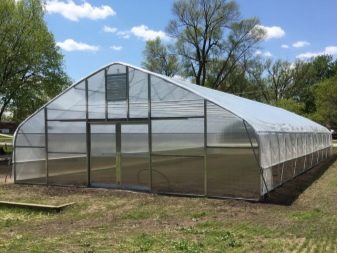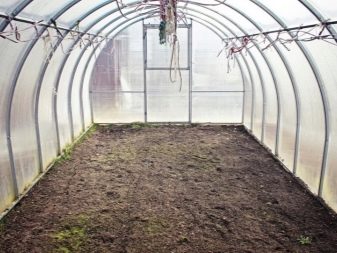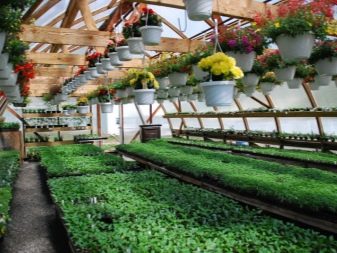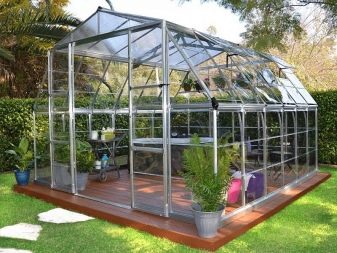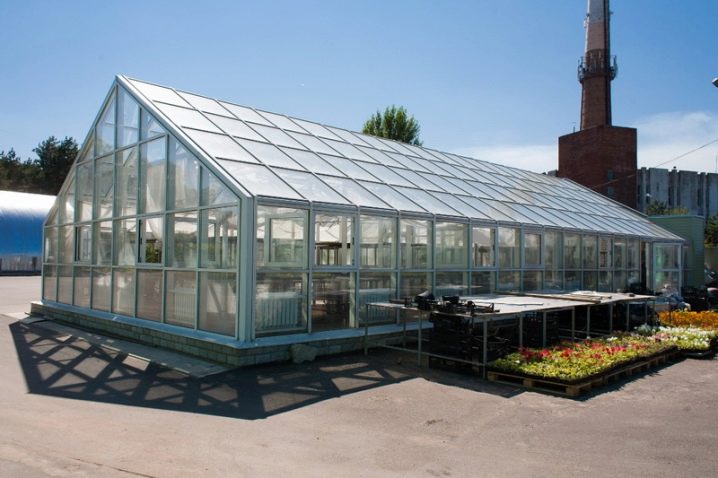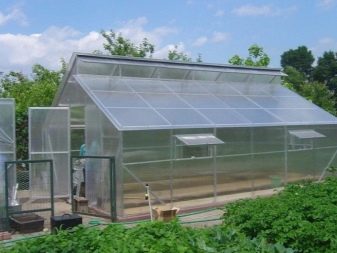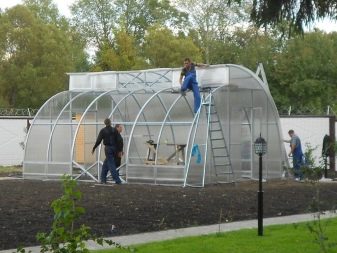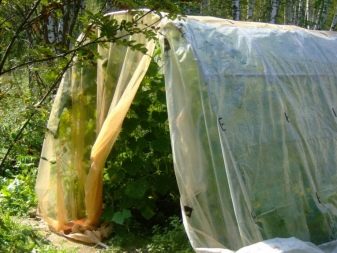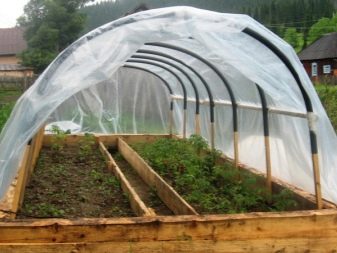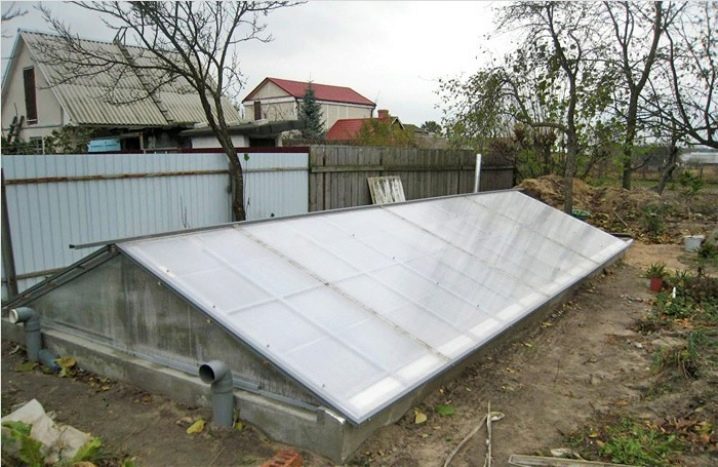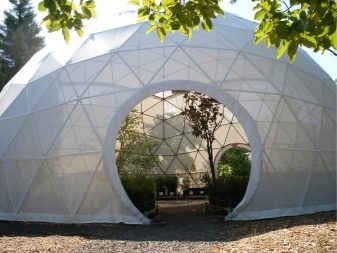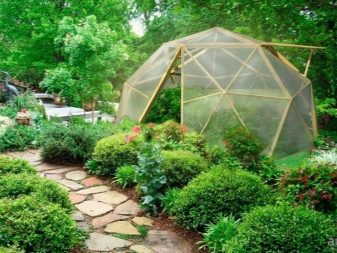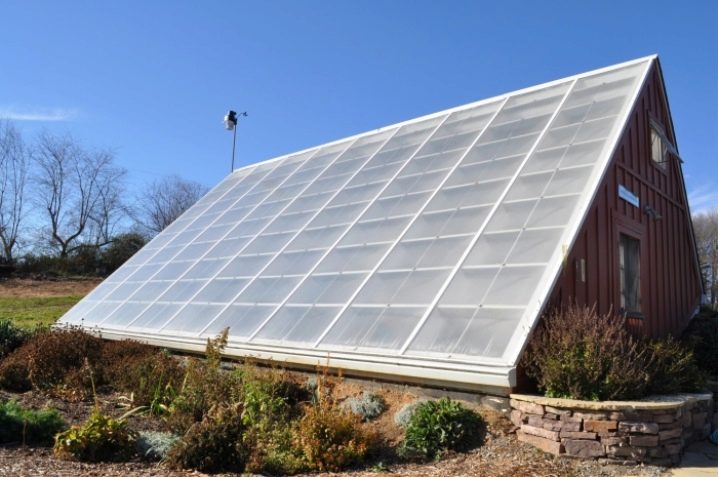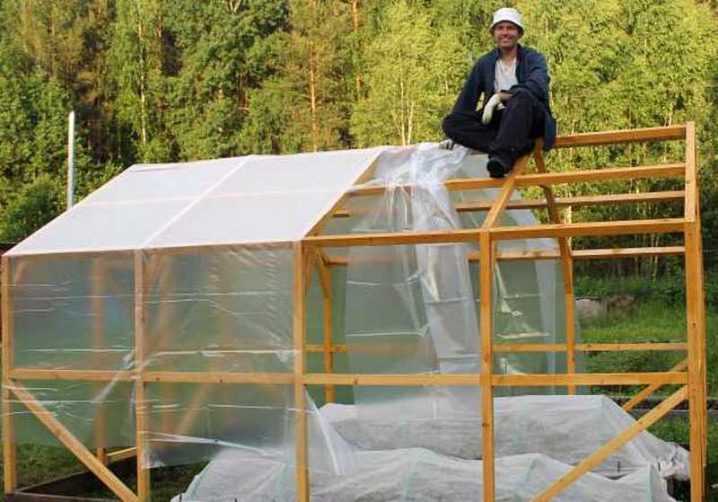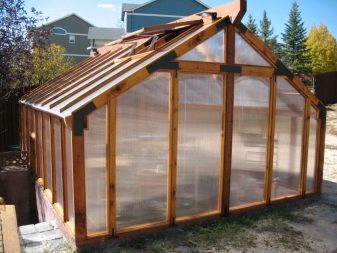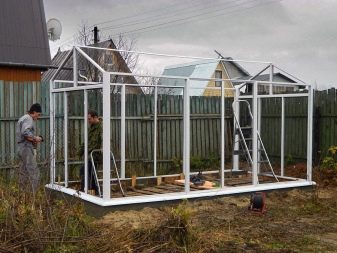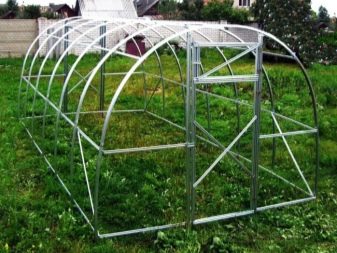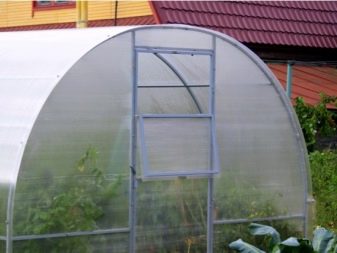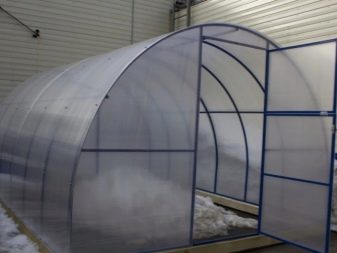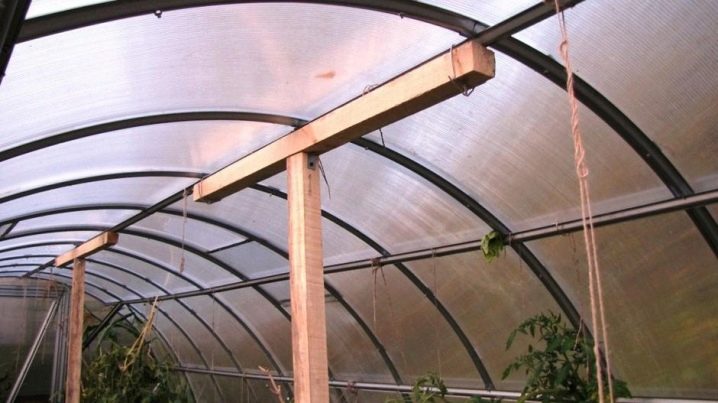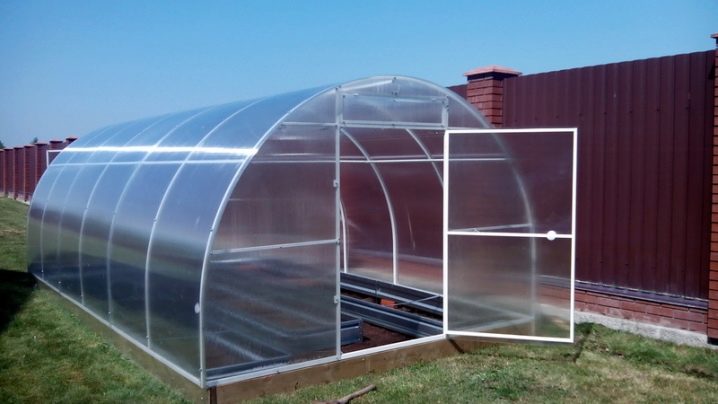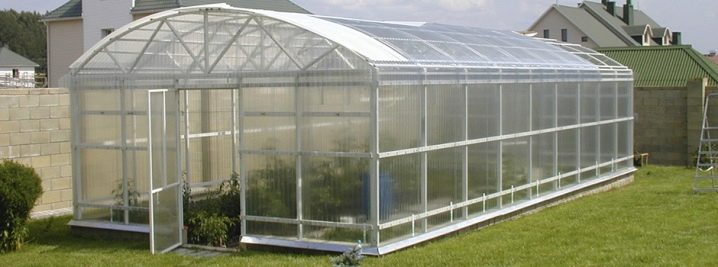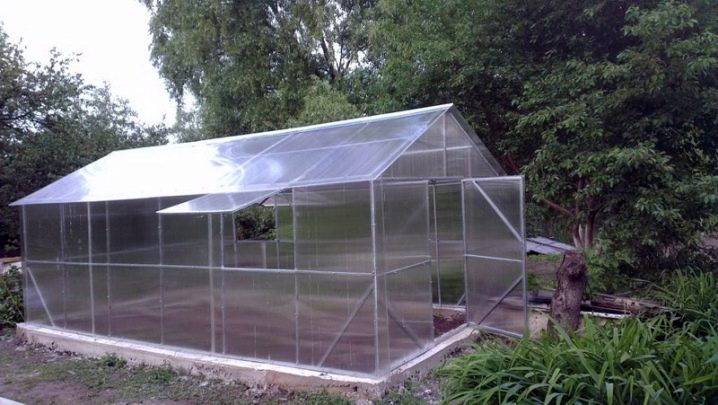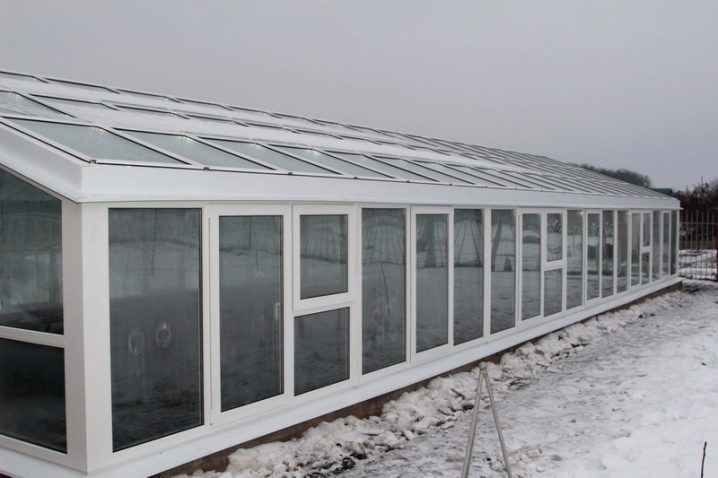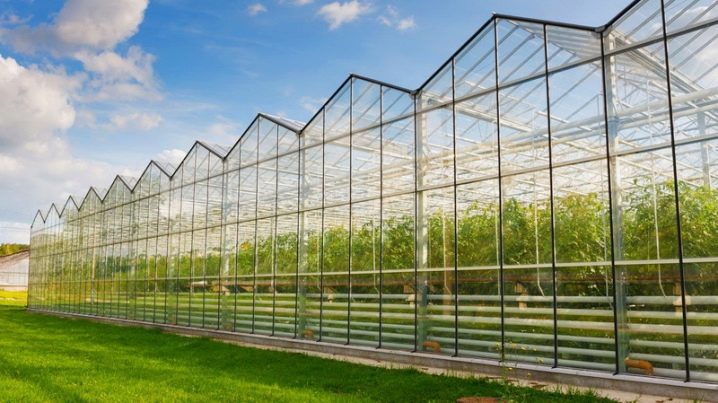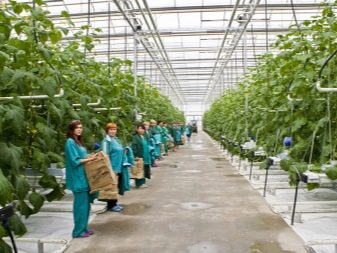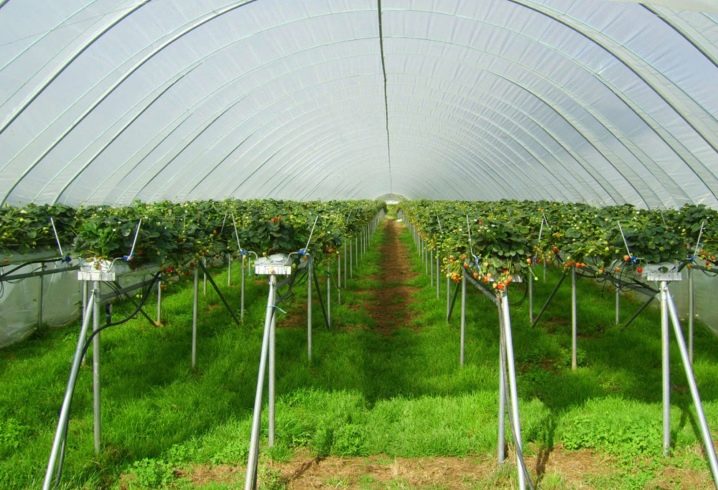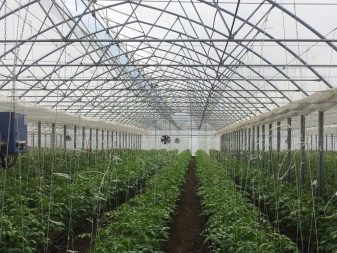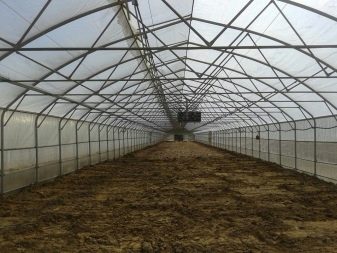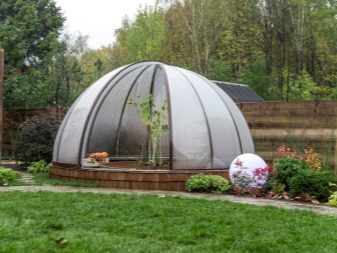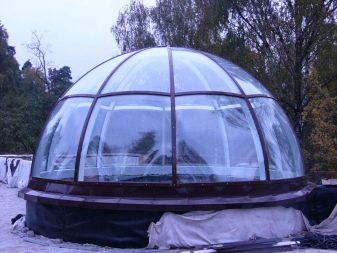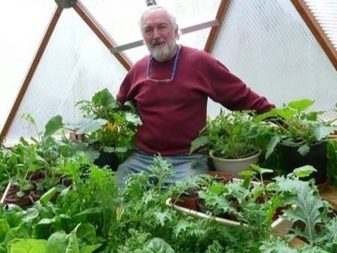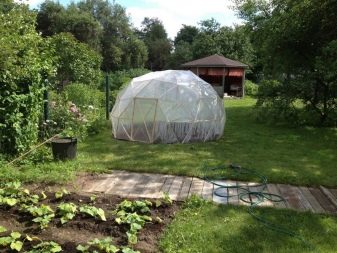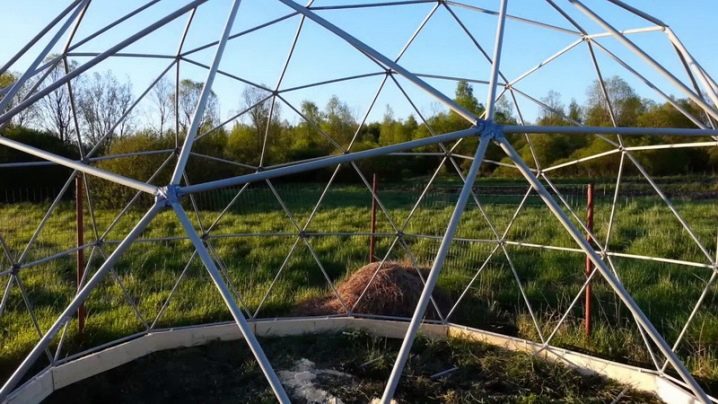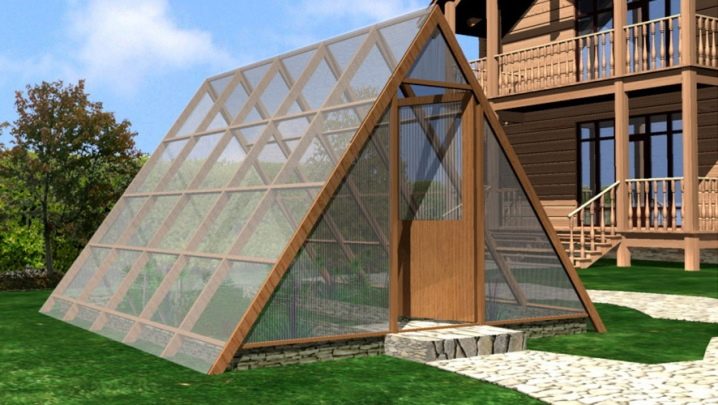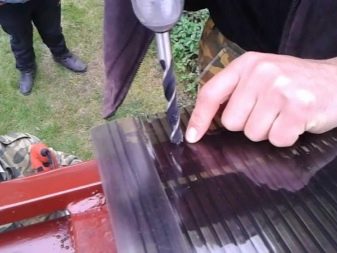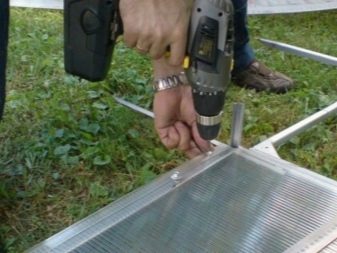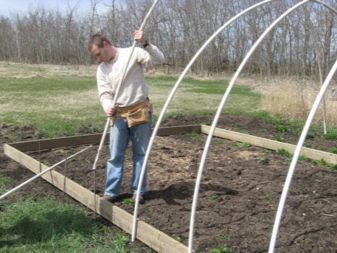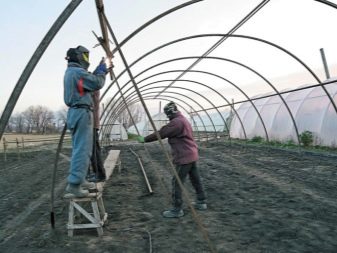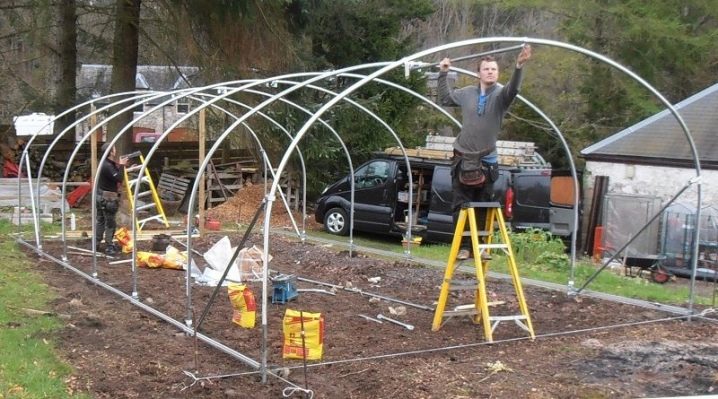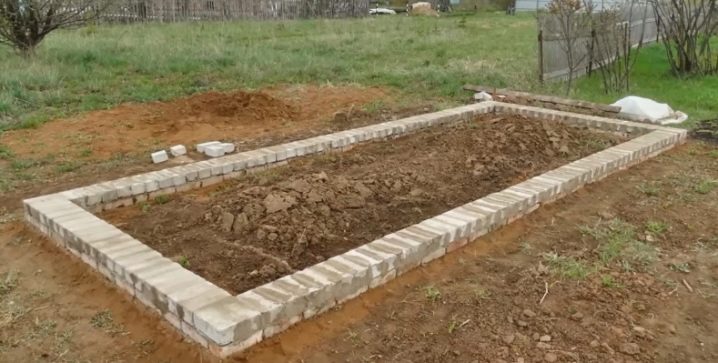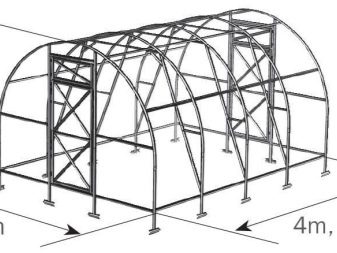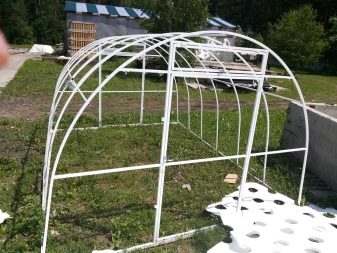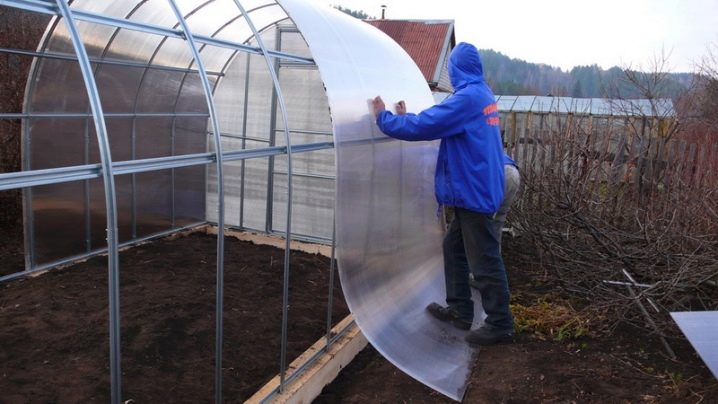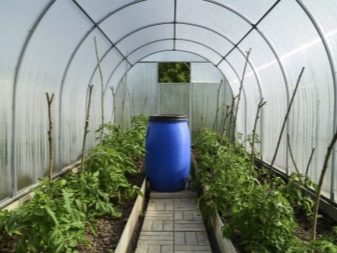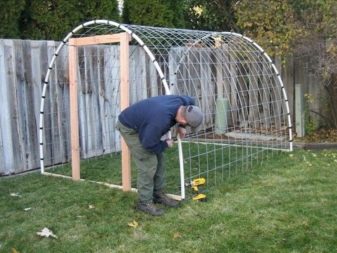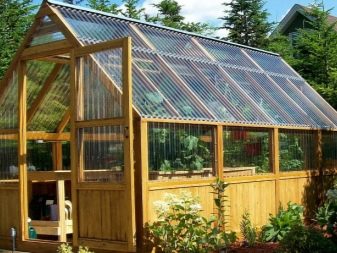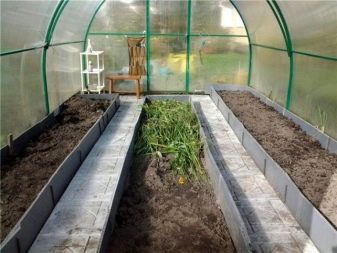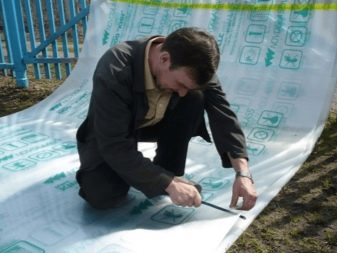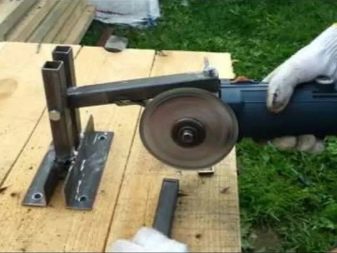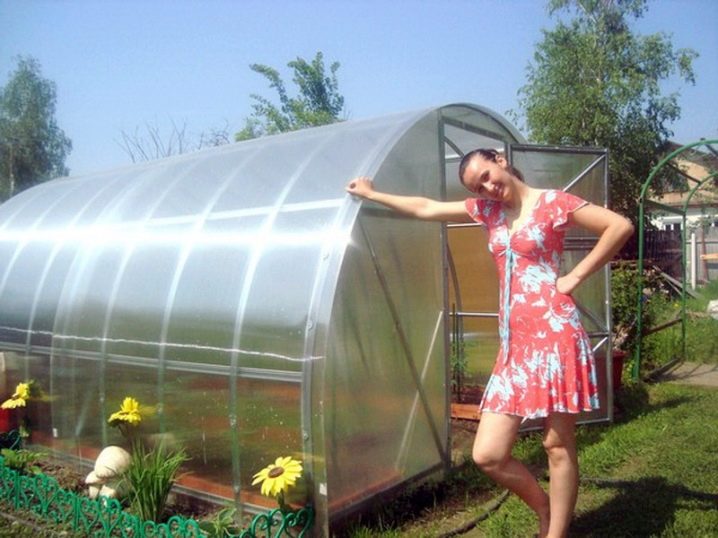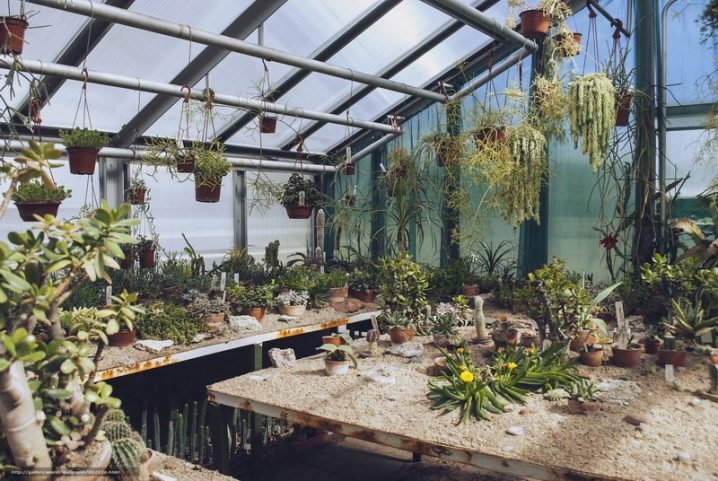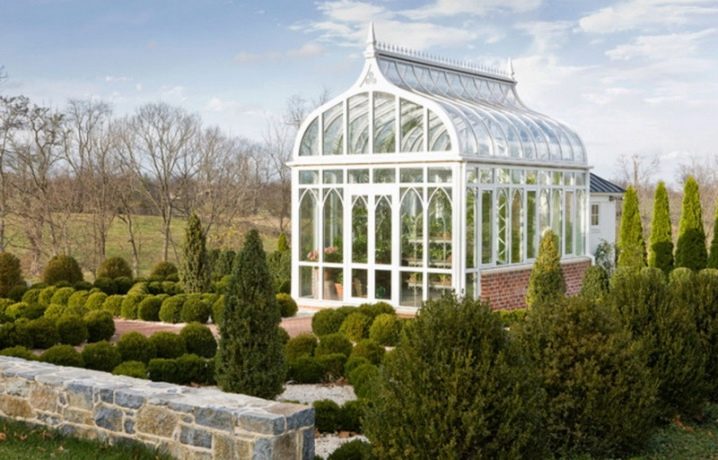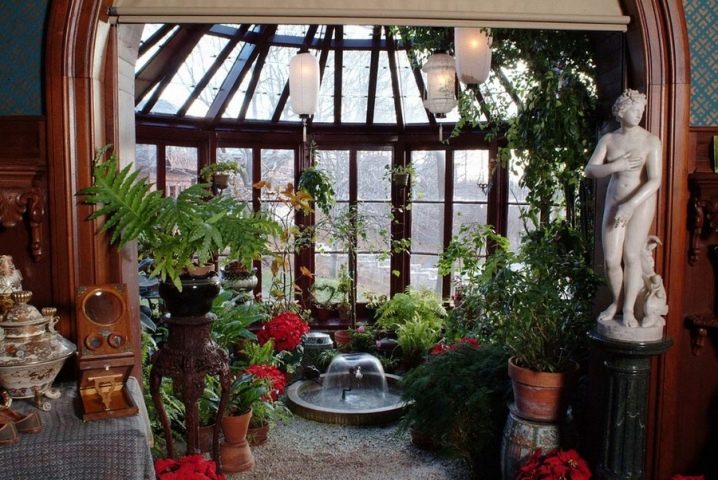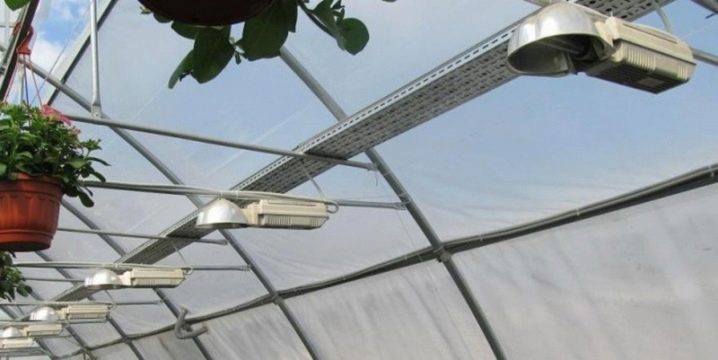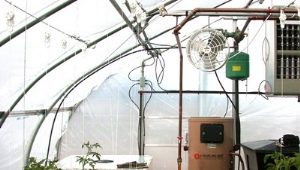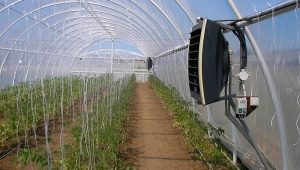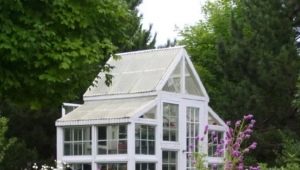How to make a greenhouse?
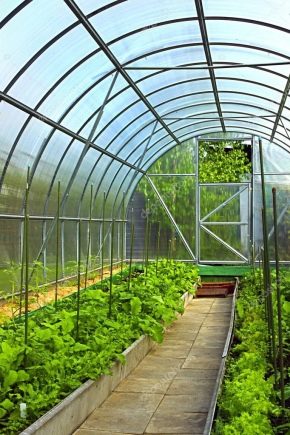
A greenhouse on the plot is necessary for every gardener. However, not everyone knows how to build it yourself. You need to have knowledge in this area, and only then move from theory to practice. This article outlines the basic basics and principles for the construction of greenhouses of various kinds.
What are the?
Greenhouses are called cultivation premises of transparent materials on the frame, intended for the cultivation of various berries, vegetables, roots, fruits, flowers and herbs in a greenhouse climate with optimum temperature and humidity.
Greenhouse buildings are installed on the flat surfaces of the southern slopes, while ensuring that the occurrence of groundwater is not located close to the ground surface. On the leeward side, the buildings are protected by a palisade from forest plantations or a high fence. In order to preserve light, greenhouses are placed away from sources of pollution. Having a good access road makes plant care much easier.
Greenhouses are divided into ground with a landing area of a high-quality layer of soil, and structures in the form of multi-level shelving racks for accommodating seedlings and plants. Greenhouse covers can be ground and hydroponic. According to the type of operation they are divided into winter (year-round) and summer (seasonal). Winter greenhouses are erected from glass and concrete, and spring greenhouses are made from mixed materials that transmit light like ordinary film.
In winter, you can grow any plants, fruits and vegetables, flowers, and even mushrooms. They are considered capital buildings and are built exclusively on the foundation, can be heated by solar energy or stationary and portable heating systems using electricity or biofuels. Winter facilities for growing plants can be superficial or recessed, have a variety of designs: from arched to polygonal structures. They are built from wooden beams, cinder blocks and bricks.A metal profile, PVC structures, metal-plastic and other materials are used as a frame. Their surface consists of glass, polycarbonate and special types of organic profile with the addition of reinforcing compositions. As a rule, winter greenhouses are installed from west to east.
Summer greenhouses are used mainly in the warm season: from spring to frost. They grow seedlings or very sensitive plants. Heating of such structures is carried out exclusively by the sun. However, sometimes with a sharp decrease in temperature they use portable heating systems. And so organic fertilizers are used for heat: manure, compost and peeling, less often - peat. Biofuel creates a favorable temperature in a closed room. Therefore, summer greenhouses are often covered with plastic wrap, which makes them an economical and affordable alternative to the winter variant.
By specialization (purpose) greenhouses are divided into vegetable, for flowers and seedlings. Vegetable greenhouses are designed for year-round cultivation of vegetables. They are distinguished by better output products,than vegetables from the garden, because indoors plants are protected from adverse effects and negative factors, such as rainwater and infection by spores downwind. In the greenhouse you can grow several types of vegetables at the same time.
It is important to combine plantings correctly so that the neighbors do not become competitors and do not negatively affect each other’s crops. To adapt greenhouses for growing vegetables, it is necessary to provide transoms for ventilation, to build a separate irrigation and shading system for each type of plant.
Rustic greenhouses are usually equipped with a mechanism for regulating the temperature of air, soil, and irrigation water. Seedlings need to comply with thorough measures of disinfection of the premises, as well as in special sanitary conditions, created to avoid contamination of the soil and plants with infections and pathogenic bacteria.
Rassadnye greenhouses are equipped with sliding racks and additional structures in order to create comfortable conditions for plants. It is categorically impossible to use such a building for the purpose of growing crops from open ground, since various pests and dangerous diseases can come along with them.
Flower greenhouses are created taking into account the characteristics of flowers that are sensitive to any fluctuations in temperature, light and moisture. Such plants will not be able to grow in the open ground, so they are most often grown in specialized indoor premises. One of the popular models for growing flowers are greenhouses coated with polyethylene or polycarbonate, film tunnels and greenhouses.
Polycarbonate structures are reliable and durable, and film structures are used for particularly sensitive plants with a long period of development. Flower greenhouses are most suitable for growing numerous types of flowers. These rooms are equipped with heating, you can install additional sources of heating. The rational placement of closed flower beds is a single-sided structure adjoining the southern part of the main building. A good lighting system also contributes to the quality of the grown flowers.
By design principles, greenhouses are divided into single or hangar, multiblock (link). Roof constructions are divided into gables - oriented to the east and west, and multi-slope,the roof of which has several planes, as well as sloping, facing south at an angle of 45 degrees.
According to the type of carrier profile, greenhouses are divided into frameless and frameless ones. The premises of the closed type, built with the help of a frame, are divided into arched, beam, vaulted, cable-stayed and frame. Frameless are panel, support and combined.
Capital greenhouses consist of a foundation, frame, roof and roof. The foundation may be in the form of reinforced concrete slabs or flood. Stone foundations are now extremely rare. The roof, end and parallel surfaces are covered with glass frames, some of which are equipped with window vents and transoms, which serve for natural ventilation of the room. Seating rooms are equipped with shelves. Lightweight building structures have reinforced concrete pillars as the foundation, their frameworks are made of wooden or metal elements, as well as plastic and metal-plastic pipes.
The temperature in the premises is maintained in several ways: fuel (wood, coal, gas) and the technical method (steam heating, electricity).Heating furnaces are installed mainly in capital structures. The most common type of heating is water and electric (heat generators and transformers). Often in modern greenhouses on an industrial scale install ventilation systems, as well as a complex of installations for the formation of the microclimate.
As the year-round heating systems use colorimeters, electric radiators and infrared emitters. Electrical appliances are convenient and do not take up much space, but they do not warm up the entire area of the room, heat does not penetrate into the lower tiers. Infrared devices emit heat and light, they are mounted on the roof surface for uniform heating of the room.
Convenient to use colors. They are heated, then the air flow of the fan distributes warm air around the perimeter of the room. The optimum temperature is maintained throughout the greenhouse. Modern greenhouses are usually illuminated with fluorescent or LED lamps. They are more economical and are a good alternative to conventional light bulbs.
Hydroponic greenhouses are equipped with a mechanized complex for the supply of food crops. Breeding greenhouses are similar to rooms of artificial climate, where the process of caring for plants is correlated with temperature, water and light regimes. In greenhouse plantings, crop rotations are often used, new breeding varieties are grown.
Greenhouses can be confused with greenhouses, but these are completely different structures. They are certainly similar in purpose and general characteristics, but have a number of differences and features that do not allow them to be placed in a common row.
Greenhouses usually have small dimensions in length, width and height. They can not be used for heating. Their entire energy potential consists of accumulated heat from the sun and organic fertilizers. To care for the plants and access the inside of the greenhouse, it is enough to slightly open the side part, move aside the plastic film, which covers the frame made of wire, wooden beams and other structural elements.
A small height (up to 1.3 meters) does not allow growing tall plants in greenhouses. But they are the best suited for growing seedlings.A greenhouse is an open ground, and a greenhouse is closed. In greenhouses, the warming of air and soil is carried out separately, unlike greenhouses, in which soil accumulates and transfers heat to the film.
Greenhouses differ from greenhouses in that the latter are intended for practical purposes, and greenhouses - for beauty. It so happened that the inner-space space is used for agricultural purposes. In the greenhouses plant rare flowers and plants. Often, recreation areas alternate with aesthetic zones in which exotic animals and reptiles can live. This corner is created for relaxation, relaxation and pleasant pastime.
The winter garden is a capital building with high arches designed for trees and various rare plants. This spacious room is quite expensive in design and construction, since, in addition to design solutions, it is equipped with all types of communication, heating, ventilation and watering. In winter gardens, it is customary to organize family holidays and celebrate sign events. Pets, birds, fish can live there. Often fountains and pools are broken in these rooms, stone gardens are erected; they are decorated with statues and architectural fragments, installations and artifacts of different eras.The thematic focus is supported by a single historical style or the flow of art.
Kinds
In order to select the desired type of closed room, you need to take into account its features, as well as purpose. You should be aware that single-pitch greenhouses are the most economical and less costly. This is the so-called budget option. Working in such rooms is very convenient. It is possible to put lean-to designs rather quickly. It is preferable to place them on the south side, although it does not matter. It is not recommended to cover the roof with a film or PVC coating, since the surface will sag and sag from wind and precipitation. Preferred glass or similar in composition roof.
The gable roof has the usual form of "house" and has several advantages: such a roof is stable and will not break under the weight of snow, and a convenient form allows you to make a roof from any material. In addition, massive structures require compaction of the foundation during construction, which makes it suitable for year-round use. The presence of a large number of fixing segments obliges to constant monitoring of the tightness and water resistance of the structure.Attach additional sections to the gable greenhouse will not work. But this type of construction is the most durable of all.
Homemade arched greenhouses are most suitable for growing light-loving plants. Their surfaces have less angles of light refraction. Due to the convex part of the surface increases the conservation of heat and light. Due to this, the plants grow large, which also affects the structures of this type of structures. However, it is difficult to care for them, so experts advise to carry out the main planting in the center, and make roundabout ways around the perimeter for access to the landings.
This type of room is not intended for plants and seedlings from open ground, as the features of the structure do not allow them to harden. In the winter months there is a risk of the surface bending from snow, which cannot independently leave the greenhouse surface. In places with strong winds, sturdy construction may break due to insufficient attachment to the foundation. But such a greenhouse is extremely simple in construction, convenient in dismantling and transportation. And if necessary, you can add new sections.
Dome or lancet greenhouses have special advantages. Winter precipitation does not linger on the structure of the structure, and the pointed form in the best way contributes to the accumulation of heat and the warming up of the soil cover. These buildings are the best option for the middle band and the Urals, as they are designed specifically for the snowy long winters, and are also suitable for growing seedlings. The sun's rays freely penetrate the room at the expense of favorable surface area. True, there are some difficulties in erecting a teardrop-shaped structure, since it is required to additionally strengthen the foundation and fix the surface with practically no components.
The following type of construction is one of the most expensive, but also the most practical. These are polygonal greenhouses, in which the faces alternately take on the functions of absorbing sunlight and transferring it to indoor heat sinks. In order to achieve the required temperature in such structures, you need to try. After all, complex structures made of wood, polycarbonate, glass, iron and concrete do little to maintain the temperature regime.But it is very beautiful and harmonious buildings, able to decorate any garden landscape.
Dutch greenhouses are considered the most suitable for growing all types of plants, including ornamental ones. The surface of such a greenhouse is covered with a uniform material of special glass that protects the room from the ingress of rain moisture and excessive condensate. The greenhouse is equipped with a drainage chute, so unwanted drops will not interfere with the cultivation of decorative flowers. The chute has special devices for collecting condensate, is equipped with reinforced holders of glass frames and has a very convenient location on the ridge of the roof.
The surface of the Dutch greenhouse is covered with glass frames in a single layer and is equipped with blinds for the purpose of additional curtains. Shadow screens can be located on all surfaces of the greenhouse, including the ceiling, and on a separate wall, which allows you to control the level and degree of illumination inside the room. If necessary, screens can take on the functions of additional heating.
The Dutch greenhouse is a rather long room with a gable roof and a heating system designed so that at any point of the greenhouse the temperature is the same,as well as an automatic irrigation and irrigation system. Indoor heating can also be arranged in rooms. Thus, in the greenhouses maintained its microclimate, characteristic for the cultivation of certain types of plant crops.
A greenhouse according to Mitlayder is not only an interesting solution, but also a practical room for growing crops. The north side of the roof is raised, it has a characteristic slope. At the level of divergence of the joints is the ventilation system. This unique structure has a "breathing" mechanism of regulation of air exchange, which allows you to grow a wide range of crops.
The greenhouse in the form of a hut is formed by two inclined slopes, due to which it accommodates a maximum of solar heat and light. This greenhouse is equipped with a ventilation system - vents and transoms. It is built very simply, but the useful area at the same time is small. Therefore, often hut-type greenhouses deepen into the soil.
Buried greenhouses are adapted to maximize the use of solar resources while maintaining the optimum temperature and humidity even in the harshest winter conditions.The building is immersed in the ground almost to the edges of the roof, which are the main heat insulator. To build such a greenhouse is the same as digging a well: you need to be able to dig a huge pit, and most importantly, provide reliable protection from groundwater.
An exotic option is a dome greenhouse. It has a rounded shape, consisting of complex structures. It resembles a more dome-shaped tent, covered with white material that transmits the sun's rays. This is the most expensive, but at the same time, the most original type of greenhouse. For winter, it does not fit, but for seasonal planting - the most it.
There is also the option of a greenhouse with a capital wall, serving as insulation and heat distribution. Basically, it is the northern wall, which is erected and bricks, cinder blocks or timber, insulated outside or warm inside, foam and equipped with bags of stones. Thermal cushions keep the temperature day and night. As a result, the cost of heating the room is reduced, and the efficiency is distributed to the working area of the building.
Materials
The basis of the greenhouse is the frame.It can consist of basic materials: wood, metal and PND-pipes. Additional materials from which they also form the greenhouse base are metal-plastic pipes and aluminum components. The best option is achieved with the help of a rectangular wooden bar. This is a simple and inexpensive way to build a greenhouse with your own hands.
The main thing is to protect wooden structures from mold, fungus, beetles and rot.For what it is necessary to process the workpieces by stain and special sanitary impregnations. It is best to use larch wood, but if this is not possible, it is necessary to dry the frame well to avoid shrinkage during operation. It is better to choose wood species without knots and other defects. Due to the fact that the wood is poorly bent and transformed, the creation of additional structures in the form of arches, bends and semicircles is almost impossible. Therefore, timber is mainly used for rectilinear structures.
A convenient alternative to wood is a metal profile made of steel and aluminum, for example, a profile of 20/20 millimeters. This material produces surprisingly light but durable structures that are resistant to moisture and temperature changes. True, the elements will have to be fastened with special fasteners, self-tapping screws or by welding. But the greenhouses of metal profiles are durable, reliable and durable. Creating the necessary parts is made on a special machine, which is easy to build yourself.
The metal structures for the construction of greenhouses also include a ceiling profile for fixing drywall, as well as a profile for the roof. These materials are easy to assemble and bundle, but have less strength and are not suitable for regions with snowy winters, as they tend to deform.
The use of low-pressure polyethylene pipes and polyvinyl chloride pipes are beneficial options for the manufacture of seasonal small greenhouses. These are well-bending, inexpensive materials that are easy to transport. They are gutta-percha and light, but the structures of them do not withstand the additional loads, such as precipitation in the form of snow and rain, as well as wind.
When selecting a material to cover the greenhouse, special attention should be paid to the quality of the surfaces used. They must meet all safety requirements, be lightweight, but at the same time durable. The greenhouse frame is covered mainly by light-transmitting materials such as glass and polycarbonate. Not so long ago, glass was the only material from which greenhouses and greenhouses were built. It has high density, excellent light transmission and beautiful appearance.
Glass does not enter into chemical reactions, does not emit toxic substances, does not rust and does not rot, but it is quite fragile and often beats. Because of this, its properties have created alternative coatings - analogs in the form of organic glass with the addition of binding elements, which make the material stronger and more durable, and colorless polymer coatings.
The coating for the greenhouse can also be plastic film. This is the most inexpensive material for year-round use. There are some reinforced film types that are resistant to wind and precipitation.
Polycarbonate seams have the properties of glass and polyethylene, high strength, flexibility, do not fight and do not break. Cells of cells are filled with air, which gives this material additional properties of thermal insulation and resistance to mechanical stress. It is ideal for the construction of buildings with rounded shapes. However, polycarbonate is subject to gradual destruction under the influence of ultraviolet rays, when heated and bent, it is destroyed and deformed.
During installation, additional insulation of the ends from ingress of dirt and water is necessary, otherwise the coating may “bloom” and become unusable. Today, manufacturers offer premium-grade material - polycarbonate, made specifically for greenhouses. It is designed taking into account the shortcomings of the precursors of the polymer series and has all the necessary qualities of strength and durability in operation.
You can build a greenhouse on your site with little or no cost. To do this, use unnecessary window frames, fastened together in the form of a hip or rectangular structure.Such a structure can only be used as a seasonal room for growing some types of seedlings. But it can be improved, for example, having strengthened with an additional frame, to seal the joints. In this form, greenhouses from window frames are more suitable for use.
Dimensions
Greenhouses may vary in size. They are large, free, small, and also big, narrow, wide, tunnel, and so on. Accordingly, large use on an industrial scale and in private production, for example, for growing flowers for sale. Large-sized are Dutch greenhouses with sloping walls. They are most often used when it comes to getting a big harvest.
In spacious and high rooms, you can combine various plantings: from low-growing berries to branchy bushes, arrange multi-tiered beds and multi-level beds. The use of the gradation of vertical and horizontal space allows for the maximum benefit to grow various types and types of plant crops and flowers all year round.
To heat such a greenhouse, whole heat supply and ventilation systems are needed, which should be provided at the design stage of the premises. The maintenance of large spaces requires a mechanized approach, irrigation, hilling, loosening, irrigation and fertilizer, which is quite energy intensive. Much more profitable small buildings of a compact type in several tiers, where you can grow seedlings and small fruit trees.
Extended, or, as they are also called, tunnel greenhouses are ideal for growing grapes. As a rule, grapes are used for the production of wine, therefore, the size of the landing area of this crop is of considerable size. The main task is to preserve the taste of varietal grapes with minimal use of chemicals and fertilizers. This is possible if you create a favorable environment and minimize the entry of harmful microorganisms and insect pests. The tunnel greenhouse is the perfect place to do this.
The quality of the soil, its purity and saturation with nutrients is the main advantage of greenhouses. Among the advantages are also proper temperature and humidity. If payback allows, then you can organize a large enough greenhouse.In any case, regardless of the scale, the construction is carried out according to the same rules, using the same tools.
Forms
Greenhouse models vary in shape. One of the most unusual and interesting is a round or spherical structure. In it, planting is carried out in a circle. In the center place tall plants, and on the periphery - lower and lower. This is due to the characteristic shape and feature of this kind of greenhouses. Thanks to these features, the land on the beds warms up evenly, which allows the plants to fully utilize the resources of heat and light.
Among the advantages of construction is the possibility of arranging landings at various levels. You can also use the beds-boxes, placing them at an angle of 36 degrees. The main thing is to strictly adhere to the space delimitation, then the area of a small spherical greenhouse can be used to the maximum. It is easy to build it, it is much more difficult to think over and place the ventilation system in it. To do this, you have to build around the perimeter of the vents or folding curtains with zippers.
The framework for a spherical greenhouse can be a metalprofile, metal-plastic pipes, less often - wooden beams. The coating is a film, polycarbonate or glass. Undoubtedly, with proper distribution in such a greenhouse will accommodate much more plants than in a rectangular. True, some inventory there still does not fit.
Another interesting option is a triangular greenhouse. It can be built from a wooden or metal frame. The base is a pyramid, one side of which is a transom and a door at the same time. As a covering for it serves the polyethylene film, use glass less often. It is impractical to use cellular polycarbonate, as the cut layers must be closed on all sides, and a large number of fasteners may violate the integrity of the coating. Quite fragile glass in this regard is preferable: it is not necessary to drill and fasten it; it is enough to weld the frames and fix them with a sealant.
Instruments
There are many ways to mount the profile and frame of the greenhouse. It all depends on the material of which they are composed. So, for example, to attach sheets of polycarbonate to a wooden beam, you need special components,which include roofing screws with rubber and polymer thermal washers, as well as a connecting profile. Using roofing screws with wide and powerful gaskets made of thermal rubber, you can not be afraid of deflection of the structure at the point of attachment of the mount and exposure to high temperatures.
The polycarbonate kit must include fixing materials to protect against the ingress of insects, dirt and water. Perforated tape goes to the lower end of the sheet, and hermetic - to the top. The fastening process is quite simple, it is important not to overtighten the fasteners. To cut sheets of polycarbonate need to jigsaw, strictly following the instructions.
In the case of glass fasteners to metal, metal frame, you can use several options. If there is an opportunity and skill in work with welding, metal corners are welded between themselves. In this case, the glass unit is fixed with the help of clamps. When using a metal profile, special grooves for glass are created, and such a structure is fixed with a conventional sealant with a rubber gasket. To connect the galvanized profile with glass using the same welding or screws.Packages are fixed with glue using aluminum components.
How to make yourself?
In order to build a greenhouse with your own hands, you need to have building skills and, importantly, a good project with drawings for future construction. The best projects are focused on the construction of capital greenhouses, which will serve for many years. For this, a version with a reinforced wall and a heat accumulation system in the form of a network of ventilation pipes is suitable. The northern wall of the building is insulated with bags of gravel.
The heat supply system is modeled on the principle of air circulation in thick underground HDPE - pipes with access to the outside. The heat from the heating of the soil by the sun's rays, obeying physical laws, rises upwards, and in its place cold air descends. This is a continuous movement of air masses that maintain the necessary temperature conditions of the soil and air.
Before construction it is necessary to make all measurements and begin to dig a ditch. Depending on the size of the greenhouse, it can be of different sizes, but the depth should be at least 70 centimeters.Along the perimeter of the excavation, formwork is prepared for the foundation from reinforcement using welding and supports for the supporting structures. When the frame for the strip foundation is ready, it is poured with concrete and leveled.
The cleaned bottom of the pit is lined with foam polystyrene plates or any other material. This will be the basis for the ventilation pipes, which are laid horizontally on top of the insulation. The ends of the pipes are fixed outside with the help of foil and improvised means, and the whole structure is filled up with earth.
After that, they begin to assemble the greenhouse frame according to the drawing scheme, starting from the north and from the sides. The construction is rather simple: the main thing is to properly prepare all the parts and assemble them during the installation. The frame may be brick or concrete, but it is easier and faster to make it out of wood. Next, construct the skeleton of the southern wall of wooden bars. Then the rafters are assembled and the one-side roof is mounted. She is crafted with a transom to ventilate the room, for which she places a special device - a holder with a latch and shock absorption in case of strong wind. All elements of the structure are covered with stain in several layers and waterproof lacquer.
Upon completion of construction work on the manufacture of the frame of the greenhouse, it is covered with a polyethylene reinforced film or polycarbonate: first the northern wall, then the side walls, then the southern, and finally the roof slope. If desired, the cover can be replaced with glass frames, which will significantly complicate the construction, but make it safer and more monumental. It is better not to install glass on the roof for safety reasons, because its mobile structure can be subjected to shocks. The capital north wall is insulated from the inside with layers of mineral wool and placed with bags of stones. They can be laid both inside and out. For heat accumulation, you can place cylinders or water canisters at the north wall.
In the finished greenhouse make elements for the construction of shelving, equipment, containers and other utensils. Now you can bring plants and seedlings that will grow at home. Such a construction will justify itself in the first year of operation and will become an indispensable helper in the country or in the garden.
Tips and tricks
For the construction of a greenhouse do it yourself withTry to adhere to some tips and recommendations of professionals.
- When buying wooden bars for the greenhouse frame, try to choose a winter harvesting tree, since it is much stronger, with a lower moisture content, and therefore the material is less susceptible to deformation and shrinkage.
- Applying a layer of protective composition on a wooden frame, as a rule, is not enough. Therefore, you should use a complex of special compounds, putting them in several layers. And for more effective protection against pests, mold and various destructions, use painting on wooden surfaces over special treatment.
- When installing polycarbonate structures on a wooden frame, it is necessary to use thermal washers on the leg in conjunction with screws for the roof and conventional screws for wood. It is better to use galvanized cross-bracing.
- When choosing a cellular polycarbonate, you must also purchase fixing edges of the tape, designed to protect against insects, dirt and water. They are best applied on the edges of the cuts before the formation of the structure, immediately after cutting.
- Choose high quality polycarbonate. For its marking, notches are used on laser-cut sections, on which data of the brand and production lot of the material, as well as the designation of the outer and inner sides are fixed.Failure of the parties to install polycarbonate leads to a decrease in the properties of the material with its subsequent destruction.
- When cutting cellular polycarbonate, use an electric jigsaw for metal or a grinder. Before the process you need to firmly secure the material so that there is no return at work. At the end, shavings and debris should be removed by vacuuming or bleeding the edges at the cut points.
- It is necessary to remove the protective film from the polycarbonate after installation, otherwise the design may cause cracks in the attachment points with the frame reinforcement.
- When building a glass construction with metal frame, follow the rules of protection against the appearance of rust. To preserve the profile for many years, in a timely manner cover its surface with paint and varnish.
- When working with colourants, as well as antifungal and anti-corrosion compounds, use a spray gun, a special respirator mask and silicone gloves.
- During particularly harsh winters, it is possible to insulate part of the greenhouse walls with regular foil, which will significantly reduce heat loss.
Adhering to the tips and rules, you can quickly build a greenhouse on your plot and in addition acquire the skills to build this type of structures.
Beautiful examples
The aesthetic appearance of the building is an important detail, even if this building is a greenhouse. There are design projects with outlandish architecture. So grow on the plots of six hundred squares these palaces for plants. If you wish, you can build something similar on your site. It is enough to study the basic rules and subtleties of the construction of greenhouses.
Some greenhouses on the foundation lay decorative stone on the basement, which gives the building an additional charm. The use of natural materials is the best suited for finishing this type of building. Glazing has an important role. Greenhouses with a large number of such parts are often encrusted with drawings on glass and various ornaments, which gives the building a tracery look. It is important not to overdo it so that the decor does not serve as additional shading for the plants.
Various style decisions can also take place in the construction of beautiful greenhouses. For example, for the construction in the Gothic style using pointed elements on the ridge and walls of the building. And glass stained glass windows are designed mainly of arched type.
For elliptical constructions the use of stucco, stylized columns and buttresses is characteristic. Beautiful carving on the doors and wood trim is also widely used as a decoration for finished greenhouses. At the same time, it is not necessary to adhere to strictly one style, eclecticism is quite admissible - style mixing. So, with the glass painting under the crest quite well worthy Greek ornament along the perimeter of the base. A roller coaster and bonsai successfully combined with classic creeping plants in pots and decorative vases at the entrance and around the perimeter of the building.
For the greatest effect use different lighting solutions and lights. On the roof, you can hold a ribbon with LEDs, and along the sides of the walkway leading to the greenhouse - “live flashlights” from safe candles. In such a mini-alley it is a pleasant booklet to stroll in the evening with the whole family.
With all the variety of painted images and inlaid models, those greenhouses that are looked after are considered beautiful. In appearance, the nondescript structure inside turns out to be fully equipped and cozy. An ordinary building can be turned into a cozy house for plants, if you treat the process of its arrangement with love and attention.
How to make a greenhouse with your own hands, see the next video.

